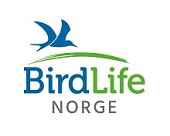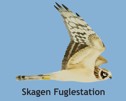
|
|
Garden Warbler Most warblers have been ringed in very low numbers, including Garden Warbler, which showed the lowest number since 2001. Report from spring 2022
The total of birds ringed this spring has been 21 % under average: 653 birds ringed (average for spring is 830) of 39 different species, 11 less than last year. Weather The average temperature has been 0.5°C higher than normal from March 15 to June 10. The precipitation was less than 1/3 of the normal in March and April, while it rained around normal during May. Average precipitation from March until May has been 55% under average. There have been 22 days without ringing, which is more days than previous years with 17 days in 2021 and 2020. Ringing The number of ringed birds has been 21% under average and the number of species has been much lower than last year. The "top 5 species" in the nets have been Starling (93) Robin (95), Willow Warbler (87), Chiffchaff (44), and Lesser Redpoll (38). Blue Tit and Great Tit showed normal numbers. Most warblers have been ringed in very low numbers. Willow Warbler, Blackcap, Garden Warbler and Common Whitethroat have been ringed 31%, 29%, 67% and 33% respectively under average. Garden Warbler showed the lowest number since 2001. Chiffchaff and Lesser Whitethroat showed normal numbers, while Goldcrest showed very low numbers. No Pied or Spotted Flycatchers were ringed this spring. The large thrushes were ringed in low numbers as well. The Blackbird shows low ringing numbers since 2019 and the Fieldfare has not been ringed in the spring season since 2018. Song Thrush also shows low ringing numbers in recent years. Blackbird and Song Thrush, which are the most abundant thrushes in the nets, have been ringed 52% and 64% respectively under average this season. The Northern Wheatear was ringed 48% under average, being the lowest year since 2003. The Common Redstart was not ringed at all this season, something that only happened in 1991. Robin is the only small thrush that has been ringed in normal numbers, with 7% under average. One Stonechat was caught in the nets and there have been two breeding pairs in the area. This is the third time that this species breeds in the lighthouse area since 1990. Dunnock and Meadow Pipit were also ringed under average. The number of finches showed in general very low ringing numbers, including Chaffinch, Greenfinch and Lesser Redpoll. The same happened to Yellowhammer and Reed Bunting. Linnet was the only finch ringed over average. Spring 2022 was the fourth one in a row without any Rosefinch in the nets. The breeding Wheatears have been well monitored in the station area in 2022. More staff was available this spring. Based on observations, we assume that the population was low or that it has been a bad breeding season, with only 9 nests found in the lighthouse area (Gunnarhaug, Vågsvollvåien, Vågsvollvika), from which 2 of them failed and two of them had less than 4 chicks. This is not surprising, considering that this species was caught 48% under average on the standardized ringing. Observations From January to June, 188 species were registered in the station area (nine less than last year). Some species have been registered in very high numbers. Guillemot, Puffin, White-tailed Eagle, Gyr Falcon, Hooded Crow, Chiffchaff, Wren and Goldfinch had all their highest numbers since we started counting in 1990. Other species of migratory seabirds also had high numbers in addition to the species mentioned above. Red-breasted Merganser, Kittiwake, Common Gull, Razorbill, Black Guillemot, Red-throated Diver, Great Northern Diver and Yellow-billed Diver, Gannet, Cormorant and European Shag, were observed in far higher numbers than normal. Velvet Scoter, Goosander, Black-headed Gull, Common Tern, Arctic Tern, Great Skua and Pomarine Skua were, on the other hand, seen in numbers between 53% and 98% below average. For many waders, the number of observations has become much lower during the last 6-7 years. This spring, Lapwing, Common Ringed Plover, Whimbrel, Bar-tailed Godwit, Black-tailed Godwit, Common Snipe, Common Sandpiper, Common Redshank, Wood Sandpiper and Common Greenshank were registered with much lower numbers than normal. In addition, no Little Ringed Plover or Ruff were seen at all during spring. Eurasian Curlew, Ruddy Turnstone, Red Knot, Dunlin and Eurasian Woodcock were the only waders seen in higher numbers than usual. The registered number of Lapwings in the area has been one of the lowest since 1990 with 900 individuals observed during the spring (average 4361 individuals). No pairs have stayed in the area and thus not bred either. There have few notable or rare species in the area during the spring. One species is potentially the first record at the station, the Western Subalpine Warbler, if it is confirmed from the DNA studies. The most special observations otherwise were Lesser Yellowlegs, Mediterranean Gull, Great Egret, Woodchat Shrike, Savi’s Warbler and Water Pipit. There has been a potential Heuglin’s Gull in Våien and the first singing Southern Bluethroat in Gunnarsmyra. The bird station continued to guide schools and private visitors in the spring in collaboration with the Visitor Center Wetland Lista. A total of 8 groups / schools have guided by the bird station. Oddvin Lund (Norway), Emma Mayer (Germany), Bård Olsen (Norway), Karina Tjørve (Norway) and Gunnar Gundersen (Norway) have been volunteers at the station and collaborated with Rubén Piculo (main ringer this spring), as well as Aïda López who has been responsible for the work at Lista Bird Observatory during spring 2022. If you want to check the list of birds ringed during this spring, click HERE. | ||||||

| Ringing numbers |
|
Sorry, but we are outside of the spring and autum seasons. Detailed log |
| Reportasje fra Lista FS i Aftenposten |

|
| Seasonal deviation | ||||||||||||||||||||||||||||||
|
|
Følg Følg Lista FS på facebook.com |
| Siste 5 på siden |
|
Lista Fuglefestival 2025 Looking for bird ringers for spring and/or autumn 2025 Begynnerkurs i ringmerking: 26.-27. april 2025 Report from autumn 2024 Lista Fuglefestival 2024 |
| Nyheter fra NOF |
|
Tvillingartene: Hauk over hauk Hvor mange fuglearter finnes... Statsforvalteren opphever... Storskarv i Europa i... Norge må heve stemmen for... Ny nødvergeparagraf i strid... Solid mangfold på Fuglenes... Krykkja fortsetter nedgangen... |
Lista Fuglestasjon
Fyrveien 6
NO-4563 Borhaug
post@listafuglestasjon.no Tlf: 949 86 793
 |  |


 Only in English
Only in English



